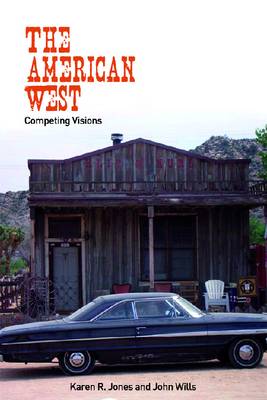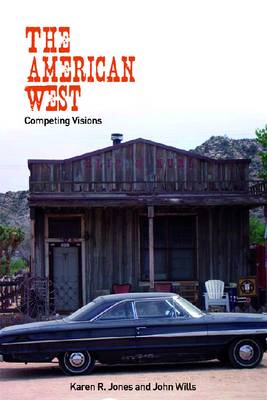
- Afhalen na 1 uur in een winkel met voorraad
- Gratis thuislevering in België vanaf € 30
- Ruim aanbod met 7 miljoen producten
- Afhalen na 1 uur in een winkel met voorraad
- Gratis thuislevering in België vanaf € 30
- Ruim aanbod met 7 miljoen producten
Zoeken
€ 47,45
+ 94 punten
Uitvoering
Omschrijving
The American West used to be a story of gunfights, glory, wagon trails, and linear progress. Historians such as Frederick Jackson Turner and Hollywood movies such as Stagecoach (1939) and Shane (1953) cast the trans-Mississippi region as a frontier of epic proportions where 'savagery' met 'civilization' and boys became men.During the late 1980s, this old way of seeing the West came under heavy fire. Scholars such as Patricia Nelson Limerick and Richard White forged a fresh story of the region, a new vision of the West, based around the conquest of peoples and landscapes.This book explores the bipolar world of Turner's Old West and Limerick's New West and reveals the values and ambiguities associated with both historical traditions. Sections on Lewis and Clark, the frontier and the cowboy sit alongside work on Indian genocide and women's trail diaries. Images of the region as seen through the arcade Western, Hollywood film and Disney theme parks confirm the West as a symbolic and contested landscape.Tapping into popular fascination with the Cowboy, Hollywood movies, the Indian Wars, and Custer's Last Stand, the authors show the reader how to deconstruct the imagery and reality surrounding Western history.Key Features*Uses popular subjects (the Cowboy, Hollywood westerns, the Indian Wars, and Custer's Last Stand) to enliven the text*Includes 13 b+w illustrations*Interdisciplinary approach covers film, literature, art and historical artefacts
Specificaties
Betrokkenen
- Auteur(s):
- Uitgeverij:
Inhoud
- Aantal bladzijden:
- 352
- Taal:
- Engels
Eigenschappen
- Productcode (EAN):
- 9780748622528
- Verschijningsdatum:
- 21/03/2009
- Uitvoering:
- Paperback
- Formaat:
- Trade paperback (VS)
- Afmetingen:
- 155 mm x 231 mm
- Gewicht:
- 521 g

Alleen bij Standaard Boekhandel
+ 94 punten op je klantenkaart van Standaard Boekhandel
Beoordelingen
We publiceren alleen reviews die voldoen aan de voorwaarden voor reviews. Bekijk onze voorwaarden voor reviews.











